Off-Page SEO: A Guide to Improving Rankings
Off-page SEO refers to all the actions and strategies that can improve a website's rankings that don't directly relate to the website.
While on-page optimisation focuses on elements like content, site speed, schema markup, etc., off-page factors look outward at how a site can better connect with users and appear valuable to search engines like Google.
An effective off-page SEO strategy can help skyrocket your search traffic and improve visibility and authority. This guide will explore leveraging off-page SEO factors to take your search engine marketing to the next level.
- Off-page SEO enhances website rankings via external signals like backlinks and social mentions, crucial for search engine visibility.
- Google's E-E-A-T guidelines emphasise experience, expertise, authority, and trustworthiness, significantly impacting content ranking potential.
- Quality backlinks from authoritative sites are vital; they convey credibility and can boost organic traffic and domain authority.
- Continuous promotion, engaging content, and relationship-building are essential for effective off-page SEO and sustained visibility growth.
- Understanding the Basics: What is Off-Page SEO?
- Why is Off-Page SEO Important?
- The King of Off-Page SEO: Building Backlinks
- Link-Building Strategies to Lock Down Backlinks
- Link Building Outreach
- Link Building Tools
- Measuring Link Building Success
- Harnessing Social Signals for SEO Value
- Reviews and Citations - Influence Local Perception
- Boosting Authority for Higher Rankings
- Leveraging Data Analytics for Insights
- Schema Markup and Structured Data's Role in Off-Page SEO
- Best Practices for Off-Page SEO
- Core Off-Page SEO Checklist
- Conclusion and Key Takeaways
- Frequently Asked Questions
Understanding the Basics: What is Off-Page SEO?
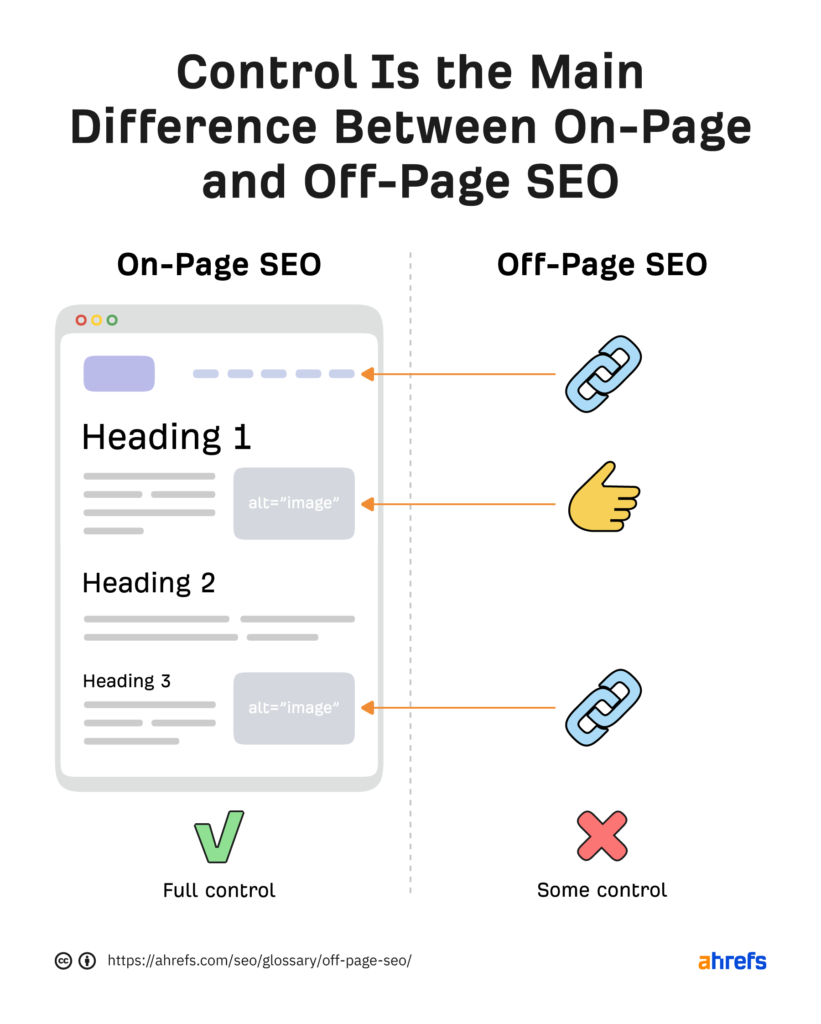
Let's start with the fundamentals – what exactly is off-page SEO?
In simple terms, off-page SEO encompasses all the external signals and cues that search engines use to evaluate a website's relevance and importance. This includes factors like:
- Backlinks – The number and quality of other sites linking back to your content
- Social signals – Likes, shares, and mentions on social media platforms
- Brand mentions – References to your brand on third-party sites and publications
- Reviews and citations – Listings and reviews on relevant directories and review sites
While on-page SEO focuses inward on optimising individual web pages, off-page SEO optimises an entire site's external perception and ranking potential.
Google's E-E-A-T Guidelines and Their Impact on Off-Page SEO
Google's E-E-A-T guidelines play a major role in how websites are evaluated in search results. What exactly is E-E-A-T? It stands for Experience, Expertise, Authoritativeness, and Trustworthiness.
These factors help Google determine if your content deserves to rank. Off-page SEO directly influences how Google perceives your E-E-A-T signals.
When authoritative websites link to yours, they're essentially vouching for your content quality. Think of it as digital word-of-mouth.
Google's Search Quality Evaluator Guidelines specifically instruct human reviewers to assess sites based on E-E-A-T principles. These human reviews help calibrate the algorithm.
The August 2023 helpful content update further emphasised the importance of demonstrating expertise. Sites with weak E-E-A-T signals saw ranking drops while expert-backed sites gained visibility.
- Experience: Shows you've actually used what you're writing about
- Expertise: Demonstrates knowledge in your field
- Authoritativeness: Establishes you as a go-to source
- Trustworthiness: Proves your content is reliable and accurate
Backlinks from high E-E-A-T sites pass more ranking power. A link from a medical journal to a health website carries more weight than one from a general blog.
Some key advantages of off-page SEO include:
- Increases referral traffic from other sites
- Boosts rankings and visibility in organic search
- Improves brand credibility and awareness
- Helps content get discovered by more users
- Positively reinforces on-page optimisation efforts
Why is Off-Page SEO Important?
There are several vital reasons why off-page SEO is critically important:
Directly Impacts Rankings
Google and other search engines use links as votes of confidence and relevance. The more quality backlinks earned, the more authority and trust are built in the eyes of search bots.
This means off-page SEO has a direct influence over search rankings. It's challenging to rank for competitive terms without a thoughtful link-building strategy.
Drives Targeted Organic Traffic
By improving search rankings, off-page optimisation helps websites attract more relevant organic search traffic. This traffic converts better because visitors clearly intend to search for specific topics and keywords.
In many cases, the economic value of incremental organic traffic outweighs the costs associated with link-building outreach and content promotion.
Builds Domain Authority
Off-page SEO helps strengthen domain authority scores. Metrics like Moz's Domain Authority and Ahref's Domain Rating reflect the power and trust built through external signals.
Higher DA and DR scores correlate with better rankings and more organic search visibility.
Amplifies and Promotes Content
Relevant backlinks help amplify content, driving more eyeballs to high-quality assets. Guest posting and influencer partnerships promote content to new audiences.
This expands the brand reach and awareness beyond owned channels alone. More visibility and amplification lead to downstream opportunities.
Core Web Vitals as an Indirect Off-Page Factor
While Core Web Vitals are technically on-page factors, they indirectly impact your off-page SEO effectiveness. Poor user experience can diminish the value of your hard-earned backlinks.
Google confirmed Core Web Vitals as ranking factors back in May 2020. These metrics measure real-world user experience on your pages.
The three main Core Web Vitals include:
- LCP (Largest Contentful Paint): How quickly the main content loads
- INP (Interaction to Next Paint): How responsive your page is to user interactions
- CLS (Cumulative Layout Shift): How stable your page is as it loads
Note that INP replaced the older FID (First Input Delay) metric in March 2024. This shift focused more on overall page responsiveness rather than just initial interactions.
Sites with poor Core Web Vitals typically see higher bounce rates. Higher bounces mean visitors from your backlinks aren't sticking around.
What's the point of earning quality backlinks if visitors immediately leave due to slow loading times? The referral traffic quality suffers.
Off-page efforts work best when supported by solid on-page performance. Good Core Web Vitals increase the value of each backlink by improving visitor retention and engagement.
In summary, excelling at off-page SEO is required to compete in many online spaces. The branded and economic value certainly warrants the effort involved.
The King of Off-Page SEO: Building Backlinks
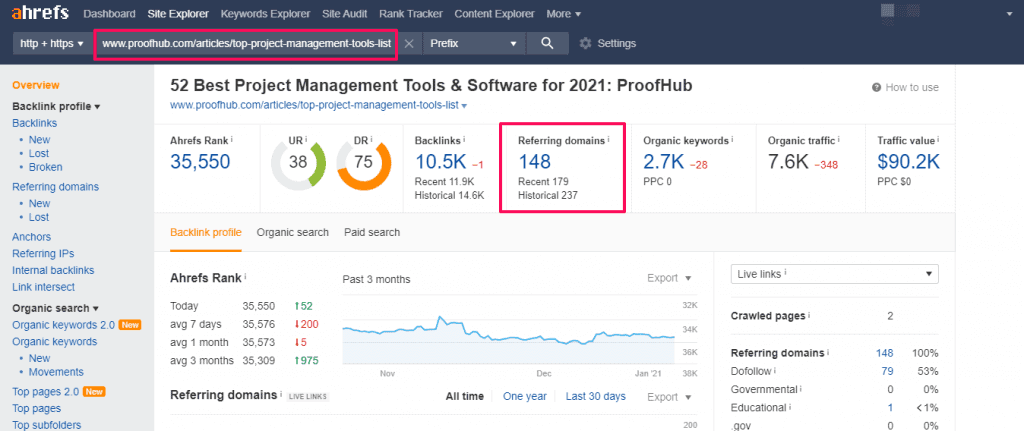
If off-page SEO were a kingdom, backlinks would surely be its king.
Backlinks remain among the most substantial ranking signals that Google and other search engines use in their algorithms. At a basic level, backlinks indicate:
- Popularity – More sites linking to you signal the importance
- Relevance – Sites link to content they find valuable and relevant
- Trust – High-quality sites are selective with links, lending their credibility
In short: More backlinks = higher rankings (usually).
However, not all backlinks are created equal. Let's explore some best practices for building backlinks effectively:
Focus on Quality Over Quantity
A single New York Times or Wikipedia backlink is more potent than 100s from spammy or irrelevant sites.
When building links, prioritise quality sites with authority in your niche. Relevant blogs, educational sites (.edu domains), directories, and publications are great targets.
Diversify Your Backlink Profile
Strive for backlinks from diverse quality sites rather than an overload from a single domain.
Diversity helps appear natural and protects against volatility if some links disappear. A mix of editorial links plus references in directories, aggregators, and local citation sources is ideal.
Earn Links Naturally Where Possible
The best links result from sites genuinely referencing your content because they find it useful. While outreach has its place (more below), striving for natural links, when possible, adheres best to Google guidelines.
Ways to earn links without outreach include:
- Creating genuinely helpful, exceptional content
- Becoming an authoritative source that sites want to reference
- Publishing research, data, tools, or resources that others find helpful
- Following and engaging with influencers and websites in your space
The key is adding value instead of seeking links. Do that consistently, and high-quality references will come in time.
Okay, let's talk about link-building strategies.
Link-Building Strategies to Lock Down Backlinks
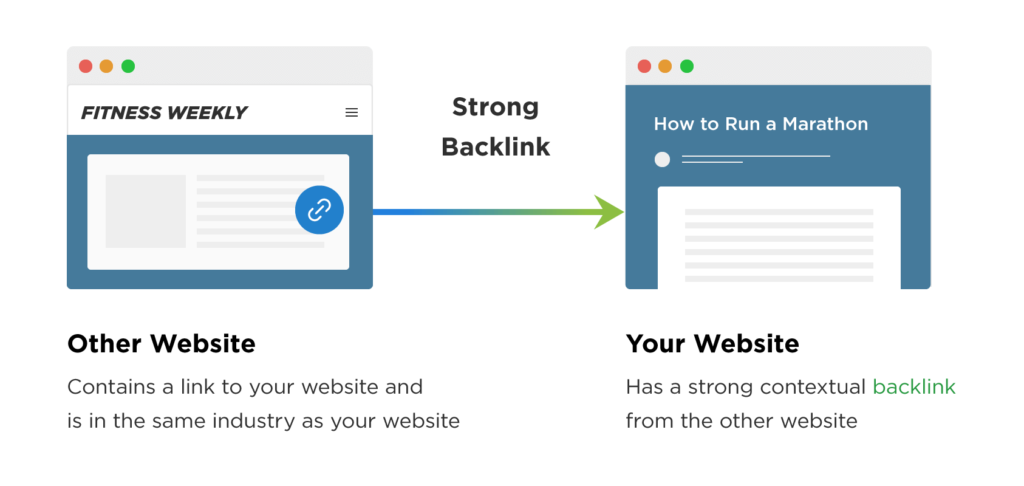
There are several core link-building tactics and assets to focus on:
1. Guest Posting
Publishing articles and guest posts on popular sites in your industry remains one of the most effective ways to earn excellent links: contact site owners and editors about contributing posts around topics and keywords relevant to both audiences.
Best practices:
- Target sites that get good traffic and have influence/authority
- Make sure guest posts are helpful and engaging
- Include natural anchor text links back to relevant landing pages
- Promote guest posts across social media channels
2. Link Insertions
Link insertions mean proactively contacting site owners and writers directly, asking them to link back from relevant pieces of content. This is outreach pitching focused specifically on earning backlinks.
For example, seeing a recently updated piece on “content marketing strategies” presents an opportunity to pitch adding your posts as a helpful recommendation in the roundup.
3. HARO and Journalist Outreach
HARO (Help A Reporter Out) offers a powerful way to secure quality backlinks from news sites and publications. Founded in 2008 and now owned by Cision, HARO connects journalists with expert sources.
The platform serves over 75,000 journalists and 800,000 sources. It delivers query emails three times daily on weekdays.
How does it work? Journalists post requests for expert insights on specific topics. You respond with your expertise. If selected, your quote appears in their article with a backlink to your site.
The beauty of HARO lies in its simplicity. You're helping journalists create better content while earning high-authority backlinks in return.
Best practices for HARO success:
- Respond quickly to relevant queries
- Provide concise, valuable insights
- Include your credentials and why you're qualified
- Follow all submission guidelines exactly
Similar platforms include Qwoted, ResponseSource, and ProfNet. Each works slightly differently but offers the same core benefit: connecting experts with content creators needing quotes.
3. Branded Link Mentions
Like link insertions, this focuses on brand name mentions and links rather than broader topic insertion. Monitoring new publications and trends around your brand, product, and keywords presents regular opportunities to request backlinks from relevant brand callouts.
4. Converting Unlinked Brand Mentions
Unlinked brand mentions represent low-hanging fruit in the backlink world. These are instances where websites mention your brand but don't link to your site.
Finding these mentions is relatively straightforward with tools like BrandMentions, Ahrefs Content Explorer, and Google Alerts.
The process works like this:
- Set up alerts for your brand name and variations
- Review mentions to find those without links
- Contact the site owner with a friendly request to add a link
- Follow up once if needed, but respect their decision
The conversion rates for such outreach typically range from 5-15%. This might seem low, but the effort required is minimal compared to creating new backlink opportunities from scratch.
These sites have already demonstrated familiarity with your brand. They're much more receptive to adding a link than completely cold prospects.
A simple email template might read: “Thanks for mentioning [Brand] in your recent article. Would you consider adding a link to our site so your readers can learn more?”
4. Resource Pages
Creating link-worthy content assets like ultimate guides, ebooks, templates, checklists, case studies, and other resources has become ubiquitous. But it remains an effective tactic because it works. These dedicated resources present branding opportunities, attracting natural and solicited links over time.
5. Business Listings
As highlighted above, properly claiming and optimising online profiles, directories, and citations is hugely impactful. Completing key platforms presents a reasonably easy link-building opportunity that improves local SEO visibility.
While guest posting and resource hubs tend to move the needle most for link volume and referral traffic gains, don't underestimate the value of leveraging brand mentions and optimising online listings. A balanced and diversified approach across each helps avoid over-optimisation risks.
Link Building Outreach

Contacting site owners directly and asking for links remains the most widely used tactic to accelerate link acquisition. But cold outreach is challenging, and response rates vary significantly based on factors like:
- Website relevance
- Outreach professionalism
- Clear value exchange
- Relationship strength
Follow this framework when conducting link outreach campaigns:
Research and Identify Targets
Leverage tools like Ahrefs, SEMRush and Majestic to analyse competitors' backlink profiles and identify viable targets. Prioritise relevant, trusted sites with good domain authority/traffic levels.
Personalise Pitches
Copy-pasting generic pitches is a non-starter. Craft unique value propositions explaining why linking benefits the target site and its audience.
Provide Link-Worthy Assets
Don't make asks without offering something in return. Provide guest post drafts, data assets or links to compelling resources that deserve amplification.
Follow-Up Respectfully
Don't harass people with multiple follow-ups in a week. But do circle back periodically if you don't receive an initial response. Use phone or LinkedIn to make more personal outreach if email goes cold.
Establish Long-Term Relationships
Getting links should not be a one-time transaction. Nurture relationships by sharing content, providing data or giving backlinks yourself. These connections can foster ongoing amplification opportunities.
Outreach takes time and effort but pays dividends through high-quality backlinks, referral traffic and brand visibility lifts.
Link Building Tools
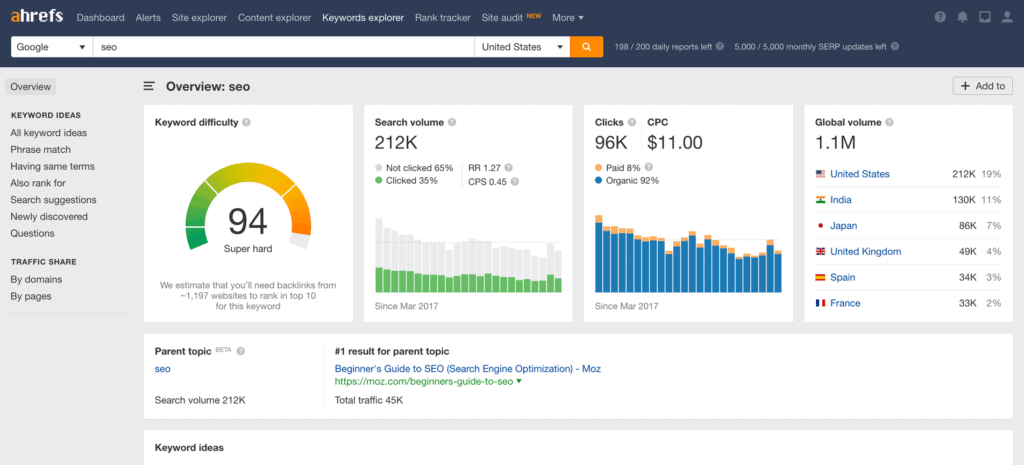
While manual outreach and relationship building are ideal for earning strong links, leveraging tools helps streamline research and identify more opportunities.
Ahrefs
Ahrefs provides detailed backlink analysis, metrics tracking, rival identification and promising targets via Site Explorer. Useful for auditing profiles and spying on competitors.
BuzzSumo
BuzzSumo analyses content performance and influencer reach to spot amplification opportunities. Helpful for guest post research and outreach prioritisation.
Mailshake
Mailshake helps organise outbound email campaigns with automation, templates and tracking. It enables more scalable link-building and follow-up workflows.
Pitchbox
Pitchbox is a CRM and mailbox manager focused on simplifying link-building outreach, follow-ups and relationship management at scale.
Google Search Console
Google Search Console provides data on existing link profiles and new backlinks earned over time. It helps track link velocity and monitor sources.
The tools above help streamline initial research workflows but ultimately come second to crafting personalised, value-driven outreach. The software supports the process, but relationship-building closes deals.
Measuring Link Building Success
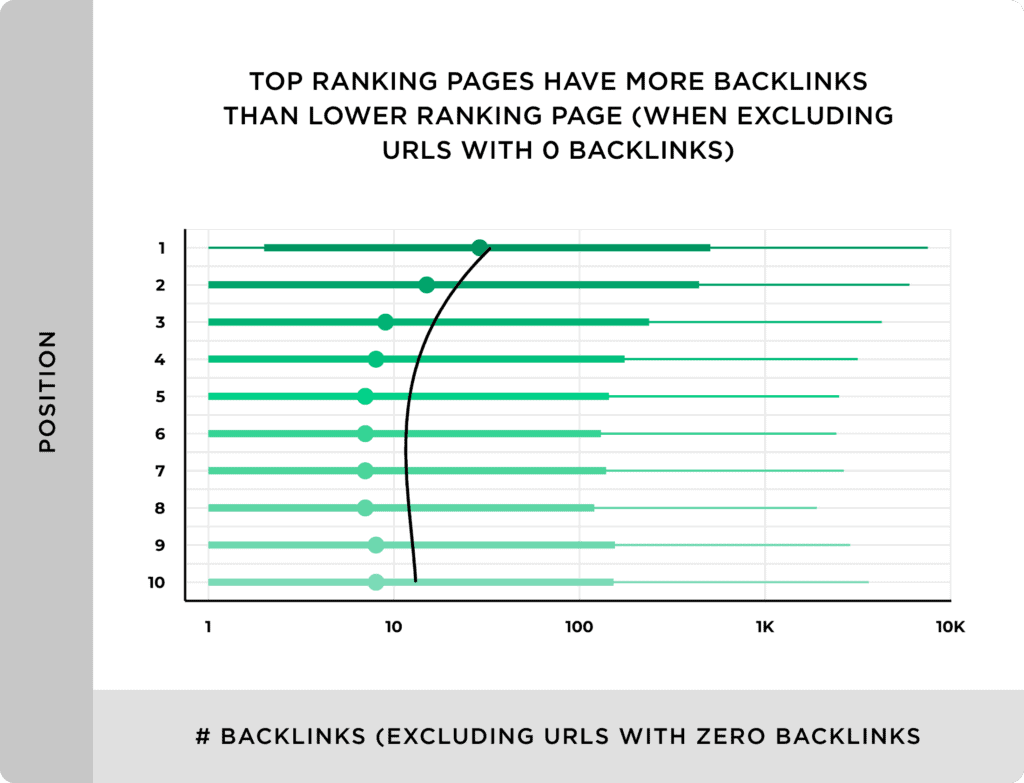
Tracking key metrics to quantify link-building progress and ROI is essential. This helps spot what's working well and identify areas needing improvement.
Backlink Growth
Monitor total backlinks and new monthly links earned via Ahrefs, Moz and Google Search Console. Set goals for monthly link velocity based on historical rates and industry benchmarks.
Referral Traffic
Backlinks should drive referral visits over time. Review top content assets, landing pages, and the monthly referral traffic generated via Google Analytics. Healthy and growing referral levels indicate value creation.
Rankings Lift
The proof is in the pudding regarding moving search rankings, especially for priority target keywords. Track mobile and desktop rankings monthly via tools like SEMRush, Searchmetrics or Advanced Web Rankings.
Domain Rating Increases
As mentioned earlier, metrics like Domain Authority and Domain Rating reflect link equity and trust built over the long term. Review changes month-over-month as a benchmark for overall domain strength improvements.
Link Diversity
Keep tabs on backlink diversity and avoid over-optimising just a handful of domains. Maintain a healthy spread of links across different sites and pages via Ahrefs and Majestic.
Consistent growth across these areas indicates an effective link-building strategy bearing fruit, ultimately driving more organic traffic and visibility.
Harnessing Social Signals for SEO Value
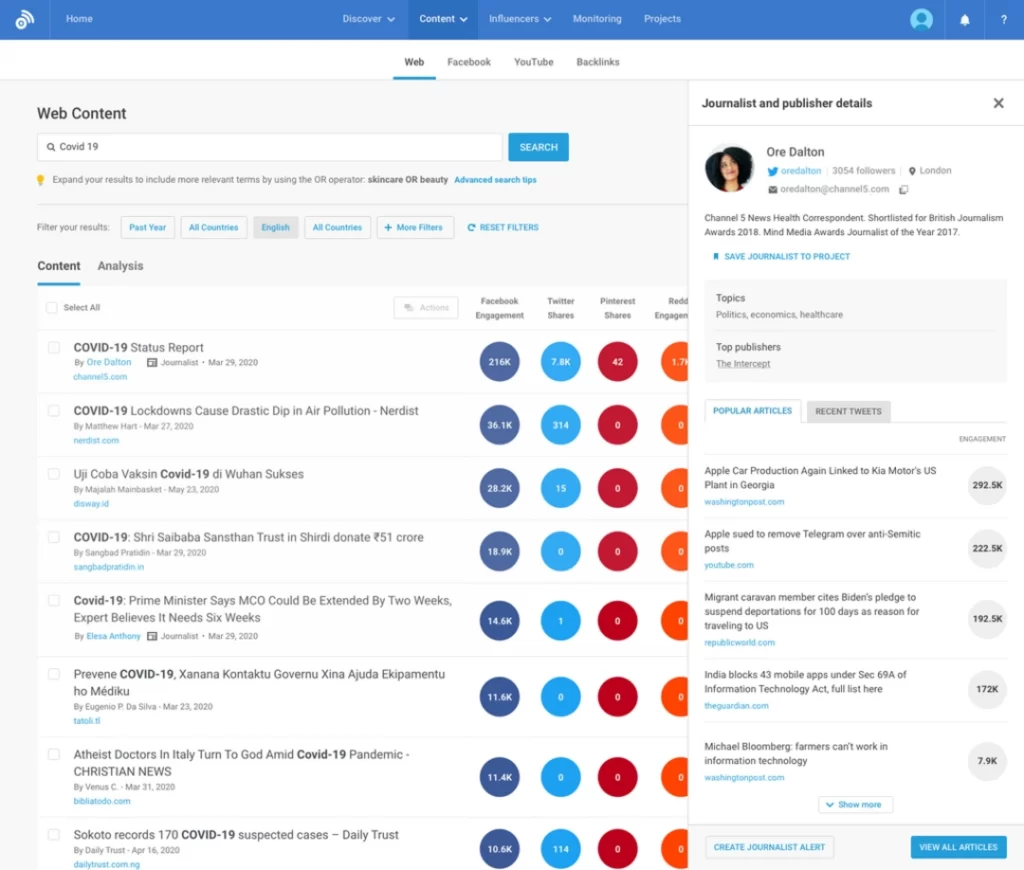
Beyond backlinks, fostering brand mentions, likes, shares, and engagement on social media also provides value.
Google and Bing take social signals into account as ranking factors.
While social should support your strategy rather than fully drive it, nurturing an audience on networks like Facebook, Twitter, Pinterest, and LinkedIn can boost SEO.
Tips for improving social signals:
- Cross-promote new posts – Share blog content across social channels to maximise visibility
- Use relevant hashtags – Where appropriate, include popular hashtags to appear in more feeds
- Follow influencers – Engage with leaders in your space to get on their radar
- Spark engagement – Run contests/giveaways, ask questions, etc., to fuel shares and likes
- Embed social follow links – Include call-to-actions to follow your brand's social profiles onsite
The more quality engagement your brand earns, the more signals it gets, indicating popularity and relevance.
Reviews and Citations – Influence Local Perception
User-generated reviews on sites like Yelp and Google, and formal citations in directories represent other critical local ranking factors.
Although management has cracked down on fakes, authentic positive reviews still provide credibility signals. Plus, they build trust and social proof!
Proactively claiming listings on sites like:
- Yelp
- Apple Maps
- ThreeBestRated
- Manta
- BBB
- Yellow Pages
- CitySearch
Keeping information consistent helps cement your brand. Enable customers to discover basic details like opening hours alongside reviews, reinforcing quality perception.
Boosting Authority for Higher Rankings

Beyond specific optimisation tactics, authority broadly plays a crucial role in off-page SEO.
Authoritative sites are deemed more trustworthy and tend to rank better. While Google guards exact authority metrics, signals likely include:
- Backlink volume/quality
- Organic traffic
- Domain history/age
- Social media metrics
- Brand mentions
So, alongside directly earning backlinks and social signals, focus indirectly on becoming an outlet that readers and industry peers recognise as an authority.
Ways to Build Authority
- Create routinely helpful, extremely shareable content
- Publish your original research and data
- Build relationships with influencers and journalists
- Speak at industry conferences and events
- Pitch expert quotes to reporters for news articles
- Conduct user surveys and interviews highlighting your expertise
- Develop tools/calculators that provide unique value for your niche
- Earn featured placements in relevant publications
Position yourself alongside top brands and earn trust through problem-solving rather than self-promotion. As neutral third parties increasingly reference you, authority grows.
Authority Site Examples
Some examples of established authoritative sites include:
- Budget travel niche – Nomadic Matt
- Cooking niche – Serious Eats
- Marketing niche – Backlinko
- Fitness niche – Nerd Fitness
Study consistently helpful resources that rank well. Model their strategies, balancing self-promotion with providing extreme value. Recognition follows.
Leveraging Data Analytics for Insights
Incorporating data represents another opportunity area for off-page SEO.
Monitoring metrics offers tangible insights to calibrate efforts for better results.
Critical areas for attention include:
Backlink Analysis
Using link analysis tools helps assess competitor sites that are outranking you to identify link-building targets.
For example, Ahrefs, SEMRush, and Moz all provide data on:
- Top pages/posts earning links
- Specific domains linking out to rivals
- Anchor text patterns
- Link growth over time
Reverse engineer what's working via data to emulate and fuel your link campaigns.
Referral Traffic Tracking
Dive into Google Analytics to view your top referral sources sending visits.
Monitor which link-building wins drove the most new users to optimise resource allocation better.
Rank Tracking
Of course, regularly check actual Google ranking movements for core pages/posts.
While rankings technically measure on-page strength, off-page signals impact them significantly.
Use automated rank trackers like SERPBot or Search Console to assess how link building and social engagement lift keywords over time.
Social Monitoring
Keep tabs on critical social performance markers via free tools like:
- Twitter – Follower growth, engagement rates
- Facebook – Likes, shares, clicks
- Pinterest – Impressions, clicks, repins
- Instagram – Followers, likes, comments
Ensure social referral numbers align with platform growth.
Schema Markup and Structured Data's Role in Off-Page SEO
Schema markup might seem like purely on-page territory, but it actually plays a significant role in supporting your off-page efforts, too.
Schema markup helps search engines better understand your content. It's a standardised vocabulary of tags that you add to your HTML.
Google has clarified that schema itself isn't a direct ranking factor. However, the rich snippets it enables can dramatically increase click-through rates.
Multiple studies show rich snippets can boost CTRs by up to 30%. Higher CTRs mean more traffic from the same backlinks.
Here's how different schema types enhance your off-page SEO:
- Review Schema: Displays star ratings in search results, increasing trust signals
- FAQ Schema: Expands your search result real estate with common questions
- Organisation Schema: Helps establish your brand knowledge panel
- Article Schema: Helps news content appear in Top Stories
When content appears more prominently in search results, it attracts more attention from potential linkers. Content that stands out gets more links.
Schema also makes your content more link-worthy by making it more useful. FAQ schema, for instance, makes your page a more comprehensive resource that others want to reference.
Google's rich results can also increase dwell time on your pages. Visitors find exactly what they're looking for faster, reducing bounce rates from referral traffic.
While implementing schema requires technical know-how, the payoff for your off-page SEO efforts can be substantial. It's the difference between a plain blue link and an eye-catching expanded result that pulls in visitors and potential linkers.
Best Practices for Off-Page SEO

There are several essential best practices to follow for effective off-page optimisation:
Quality Over Quantity
Search algorithms have become highly sophisticated. While backlink volume used to hold more weight, Google now prioritises quality over quantity.
- Focus on building genuine, earned links from reputable sites rather than lower-quality directories or networks.
- Spotlight content: Don't build links just for the sake of links.
- Be selective with outreach and make sure target sites are relevant.
Create Link-Worthy Assets
Unique, compelling content that adds value deserves to rank highly and attract links naturally. Regularly assess content gaps and opportunities to create resources that get referenced.
Focus on Domain Diversity
Links from a diverse set of domains signal more widespread trust. Avoid over-optimising and getting too many links from just a handful of sites.
Capture Business Listings
Claiming and optimising online profiles and directories remains an essential but overlooked aspect. This includes platforms like Google My Business, Facebook, and industry-specific databases—complete profiles with keywords in descriptions, images, services and contact info.
Promote Widely
Don't just earn links and then stop. Continuously promote new content across social channels, relevant online communities, email newsletters and owned assets. Expand reach through guest posting and strategic partnerships with influencers in your space.
Core Off-Page SEO Checklist
Let's summarise with an off-page SEO checklist covering the essentials:
✔️ Leverage blogger outreach to land strategic guest posts
✔️ Build relationships with industry influencers
✔️ Prioritise link insertions within contributed posts
✔️ Claim and optimise all citations pointing to your website
✔️ Publish your unique research and data
✔️ Curate tools or resources that add value to your niche
✔️ Cross-promote content across social media
✔️ Monitor backlinks, rankings, traffic referral sources, and social metrics to calibrate efforts
Conclusion and Key Takeaways
We covered a lot of ground exploring effective off-page SEO and link building.
To wrap up, here are the core strategies to remember:
- Backlinks remain the #1 off-page ranking factor – earn links from quality sites by creating valuable resources
- Social signals influence perceived popularity – curate social followings with great content
- Reviews and citations establish local authority – actively manage key listings and directory profiles
- Build overall site and personal authority – become a recognised leader instead of seeking links outright
- Use analytics for insights – track rankings, links, traffic sources, and social analytics to optimise
Focus on adding genuine value with exceptional content and resources instead of quick wins or shortcuts. Establish trust and authority. By sticking to the fundamentals, influencer sites and broader audiences will receive recognition over time.
Now you have a blueprint for off-page SEO – leverage your new knowledge to boost website visibility!
I'm confident this thorough guide provided immense value in answering common questions about improving SEO through external signals and off-site authority building. But drop any additional questions in the comments below!
Frequently Asked Questions
How long does it take to see results from off-page SEO?
Results timelines vary drastically. Suppose publishing truly viral content, shares and links can accumulate rapidly. But for sustained efforts with blogger outreach and resource building, allow 6-12 months before evaluating.
Should I disavow poor-quality links?
Possibly. If hit with an unnatural links penalty, buying links, or disavowing spammy signals, Google will correct your practices. But generally, focus on building new quality links rather than disavowing them.
What is the ideal number of backlinks?
There is no universal ideal number – it depends on site size, age, and niche. Quality matters much more than quantity. Aim for a balanced link profile with wide diversity instead of thousands from the same domain.
Are paid links okay for SEO?
Some paid placements in legitimate publications can be acceptable. But buyers beware – purchasing links runs the risk of Google penalties if discovered. Stick to earning links naturally through quality content.
Should my off-page and on-page SEO efforts align?
Yes! Off-page signals the relevance and importance of what you're publishing on-site. So, optimise pages targeting buyers, build links from websites in your customer's journey, etc. Efforts should sync up.

